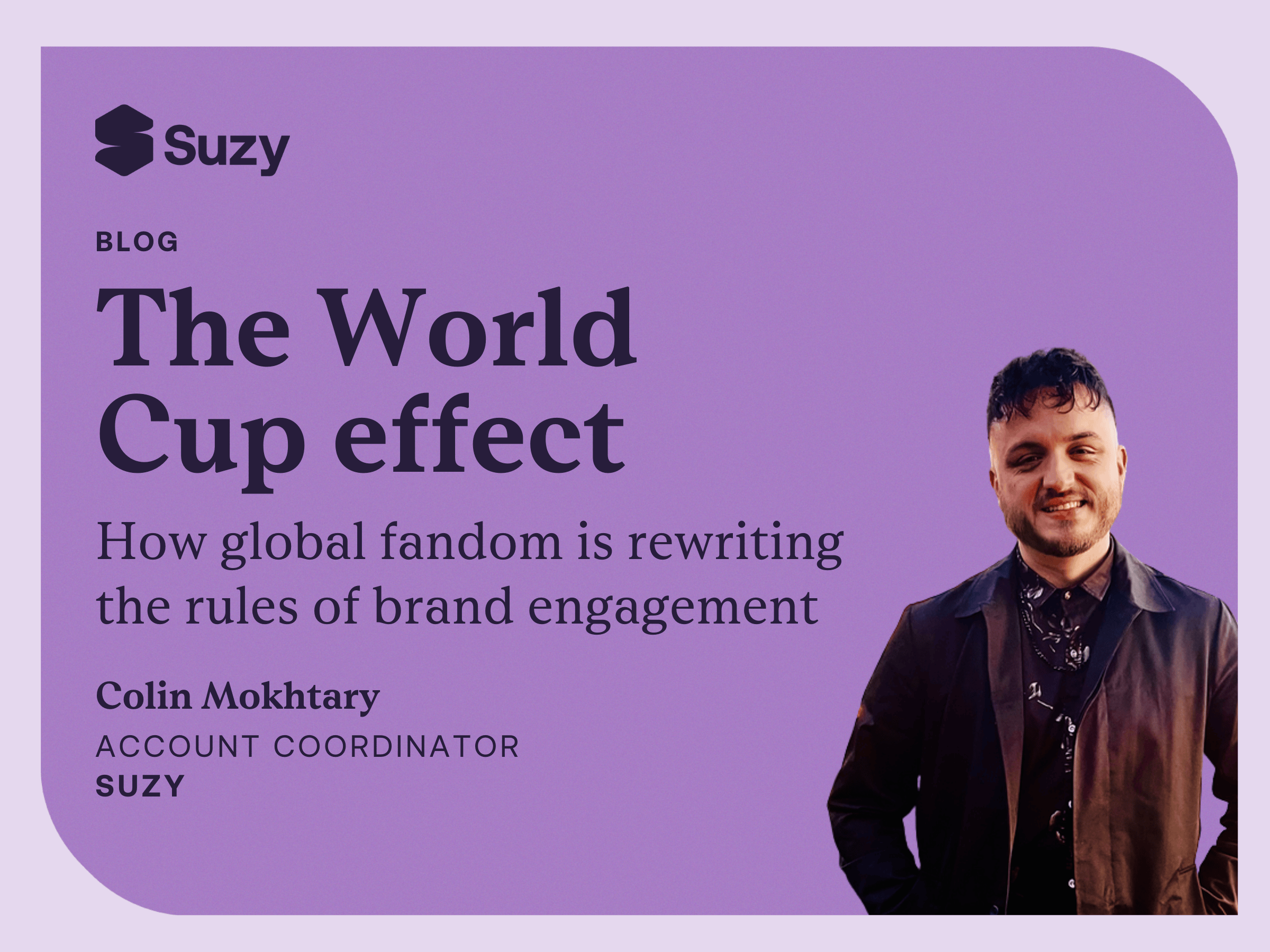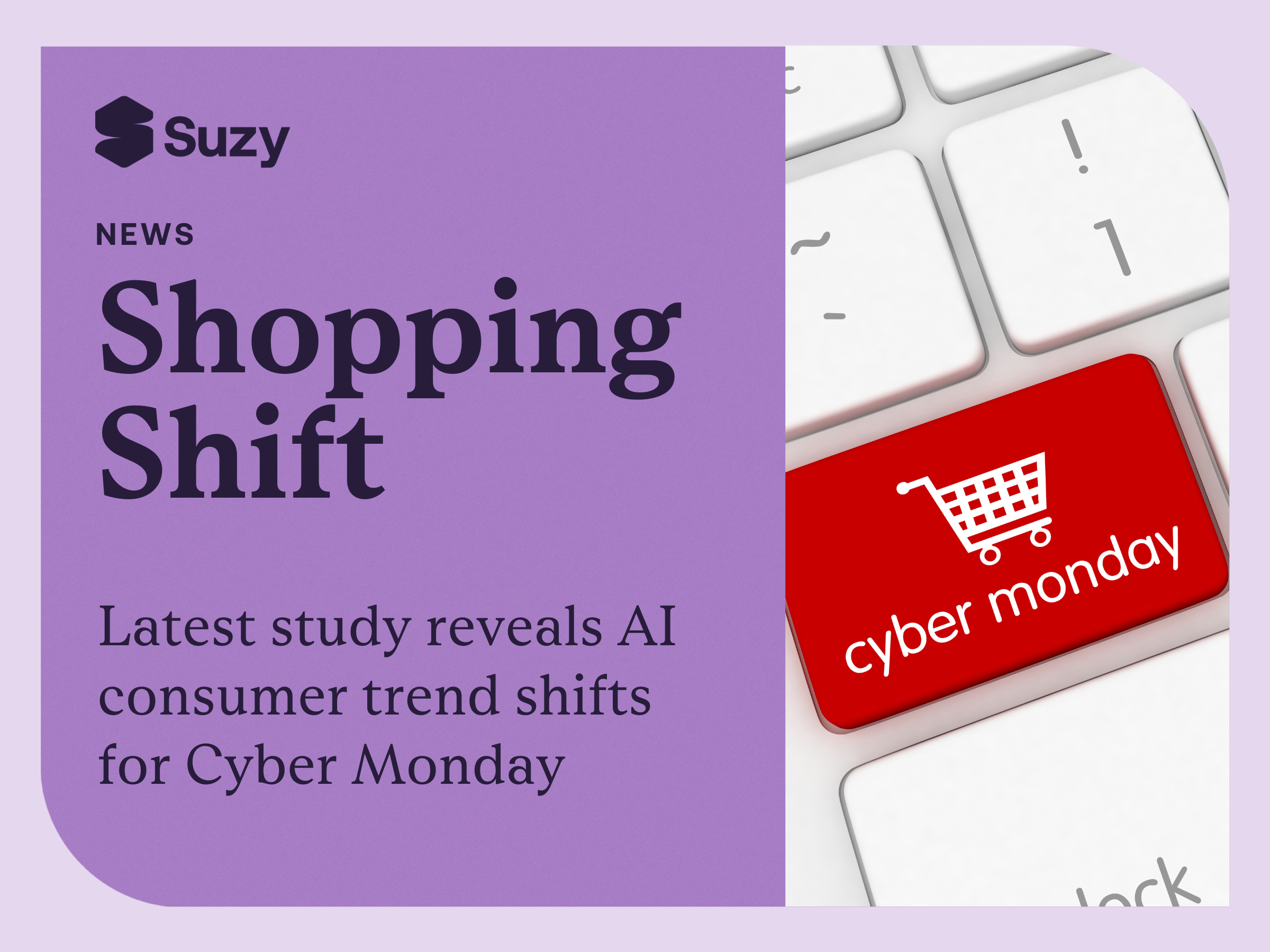What’s more important: words or numbers? That’s like comparing apples and oranges (not so different after all), or left brain against right brain (a total hoax, by the way). It’s also like pitting research methodologies against each other to ask whether qualitative vs. quantitative market research is best for your business.
Instead, (like any well-rounded education, stocked fruit bowl, or fully-functioning brain), market research needs both qualitative and quantitative methodologies. The insights from both qual and quant help brands truly understand their customers and put the consumer at the heart of their every move. Focusing on the consumer—what they actually want and need—minimizes the risk of wasting time and money on products and marketing that nobody wants.
Let’s explore the differences between qualitative vs. quantitative market research and how they work together to deliver powerful and actionable insights.
Breaking down the differences between qualitative vs. quantitative market research
Qualitative and quantitative market research are like two sides of the same research coin. Qualitative research explores feelings, thoughts, and emotions, while quantitative research deals with objective numbers. To make it even simpler, qualitative research is the why. Quantitative research is the what. Both complement each other and help to tell the full story of your consumers.
Qualitative research explores
The most powerful products and marketing speak to our feelings. It’s also why market researchers like to start with qualitative research—to get to know their customers as people.
When market researchers run qualitative research, they’re focused on words, emotions, thoughts, and opinions. It helps them understand:
- What customers look for and reject
- How they distinguish between what they look for and reject
- The language they use to describe what they look for and reject
The types of questions researchers ask usually involve subjective opinions. It’s common for qualitative market research studies to include open-ended questions so participants can answer with their own words and phrasing. Qualitative market research happens through discussion boards, diaries, open-ended questions (type or video open ends), live in-depth interviews, and in-person or online focus groups.
Qualitative market research also helps researchers determine what to measure in their quantitative surveys.
Quantitative research measures
Quantitative research scientifically measures the subjective, qualitative concepts revealed in your qualitative research. It identifies the exact numbers and quantities that trigger your customers’ “want it” and “don’t want it” responses. It also deals with specifics. Quantitative research might ask, for example, how much a consumer is willing to spend on a T-shirt.
It’s about the “quantity”—the numbers that further illustrate what people say. It helps explain:
- How much consumers are and are not willing to spend on a product
- Where consumers will and won’t buy it
- When they plan to purchase it
Market researchers conduct quantitative research through surveys and in-market experiments.

How to combine qualitative and quantitative market research for a comprehensive approach
Combining your quant and qual research is an important part of the consumer feedback loop. By interviewing, testing, and learning, you can get iterative insights that allow you to make important decisions for your business quickly. Plus, it’s helpful for every stage of your product development lifecycle.
There’s no one right way to run qualitative and quantitative market research. In some cases, you may want to switch things up and run quant first, then use qual to explore. Or, a multi-phased approach with a mix of quant and qual may be needed depending on objectives. It all depends on the unique goals of your project.
At Suzy, we collaborate with our clients based on project needs. Each project is unique, so we’ll create an approach for quant/qual research that’s tailored to your objectives. Either way, you can seamlessly transition between Suzy Live and Suzy Insights, retargeting the same audience with both quant and qual questions. And you’ll get responses back quickly so you can make business decisions fast.
Let’s use one example to illustrate how a quant and qual research project could work. Let’s say your business is an audio technology company and your flagship product is a meditation app. You noticed an odd pattern among your users. For some reason, married users aren’t using the sleep meditation section of the app.
Step 1: Define your objective, target audience, and hypothesis
Your objective is to get to the bottom of why married users don’t use the sleep meditation feature, and you probably already have some creative ideas for why that’s happening. Fortunately, you decide to verify your hypothesis with research before ever investing any money in resolving it and create your target audience—married couples who use your meditation app.
Step 2: Qualitative research through Focus Groups
Your project starts with qualitative research. First, you decide to run a online focus group. Each group includes a few married couples who use meditation apps. After digging into their nightly and sleeping habits, you discover that most of them share one problem—they haven’t found a comfortable solution for listening to audio that won’t disturb their sleeping partner.
Step 3: The birth of an idea
This leads to an “aha!” moment: an affordable, comfortable, and secure headset that allows users to listen to bedtime meditations. It won’t disturb the user’s partner, nor will it fall out while they’re trying to fall asleep. It could not only increase your product adoption but could also create a brand-new revenue stream.
Step 4: Validate your idea with quantitative research
It’s a great idea. But before investing money into creating this revolutionary new product, you need to validate your findings with a much larger sample than the 15 couples that helped lead you to this conclusion.
So, you launch a quantitative survey to 500 separate respondents who fall into a lookalike cohort. The majority of your survey respondents confirm that:
- they don’t listen to meditation apps at night so that they don’t disturb their partner
- they’re highly likely to purchase sleep headphones if the right set is made available
- after their purchase, they’d be more likely to listen to bedtime meditation
With your qualitative findings confirmed by your quantitative data, it’s time to start creating your headset.
Step 5: Innovation
Your product innovation team has been tasked with creating the perfect set of sleep headphones. The characteristics of these headphones can be gleaned from information from earlier research. Within the product design specifications, your team comes up with three options that meet your business requirements:
- an inside-the-ear wireless headset
- over-the-ear muffs
- full headband style earphones
Step 6: Concept testing
You could guess here, but like before, it’s better to validate your ideas with real consumer feedback and concept testing. You can even retarget the consumers who already told you they’re interested in and would use a product, fostering a consumer-led innovation process.
Since Suzy offers unconstrained access to our own proprietary audience, you’re able to retarget the very same participants from your previous survey. You create and launch a monadic test for your previous respondents, putting the three design concepts in front of them.
Concept A, the inside-the-ear wireless headset, comes out on top. That’s great! But before moving forward into development, you need to refine your design by understanding what, specifically, people that chose it would expect from a design. You may also want to understand why those who didn’t choose it shied away from it.
Step 7: Qualitative research with in-depth interviews (IDIs)
The ability to perform in-depth interviews (IDIs) with the same participants from your survey enables you to understand their thoughts and selection process. You invite 20 specific respondents from your survey to chat one-on-one about their selection. This group is made up of ten respondents who chose winning Concept A and five each from the other two concepts.
These interviews will help you define a much more specific set of requirements that the headset needs to include. It can also help you identify any design aspects that might scare away a segment of potential customers.
Step 8: Keep the feedback loop going
Keeping up with your consumers doesn’t stop here. Keep the consumer feedback loop going throughout the rest of your product development process, validating and discovering along the way. Using quantitative and qualitative insights throughout the process will help you truly understand and deliver what your customers want and need.
Speeding up your quantitative and qualitative insights
Professional market researchers use a variety of market research tools for quantitative and qualitative research. Unfortunately, most are glacially slow. By the time the research team finishes a study, it’s not uncommon for the trends to change, and consumers don’t want the product anymore!
That’s where Suzy is different.
Suzy is an end-to-end consumer research platfom. We help teams drive growth by giving them unconstrained access to consumers. By integrating quant, qual, and high-quality audiences into one platform, we offer MORE consumer centricity for brands that want to win. Here’s how:
- Our fully integrated consumer network means no sample costs and continuous audience retargeting, so you can do more research for less.
- Advanced research methodologies and powerful analysis across multiple use cases mean more actionable insights so you can win in the market.
- Our connected, iterative, agile, and high-quality platform allows you to shape every business decision with an in-depth understanding of the consumer for truly consumer-led growth.
Want to learn more? Book a demo with us today to see how qualitative and quantitative market research works at Suzy.
.webp)
.avif)






